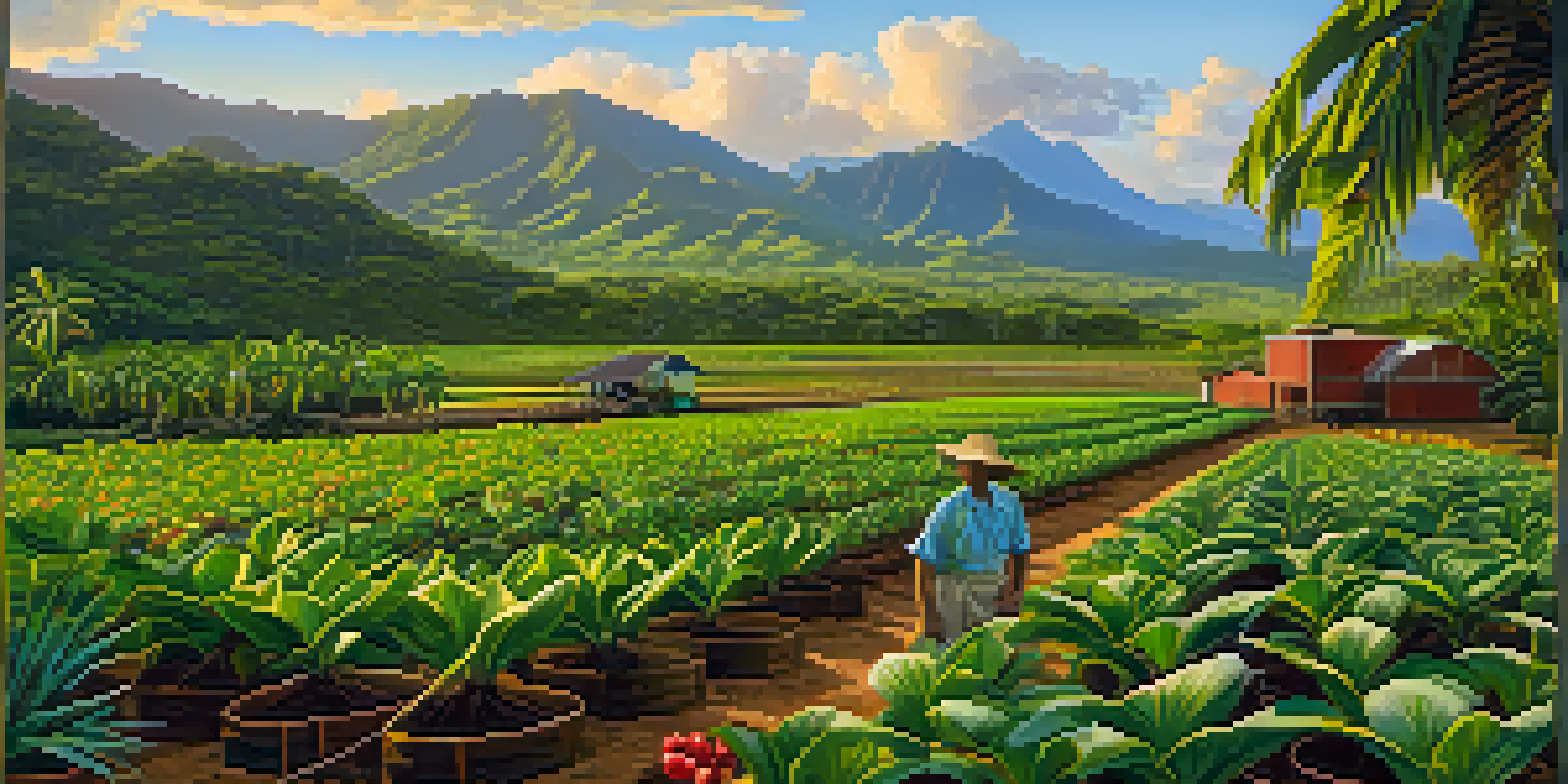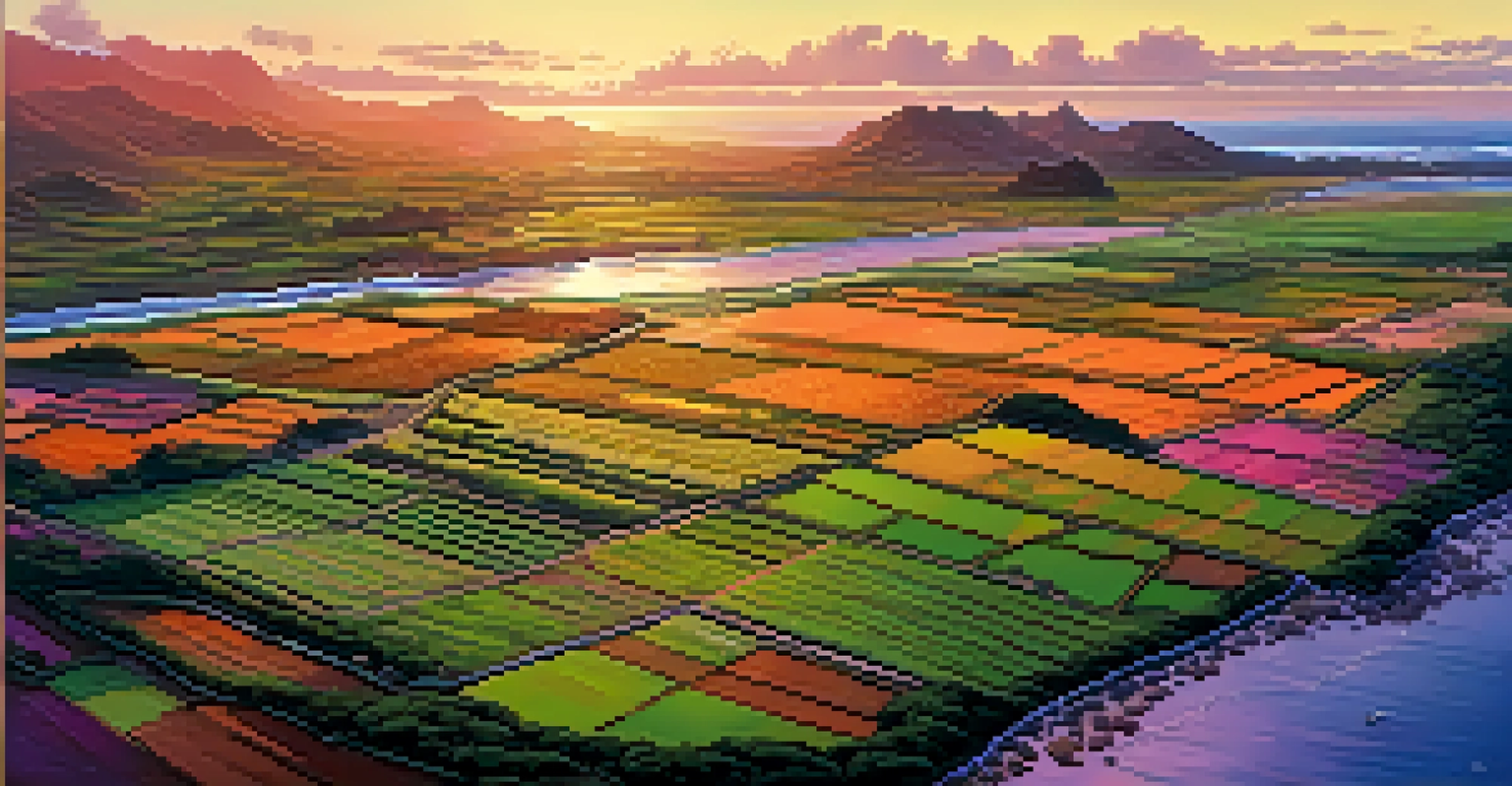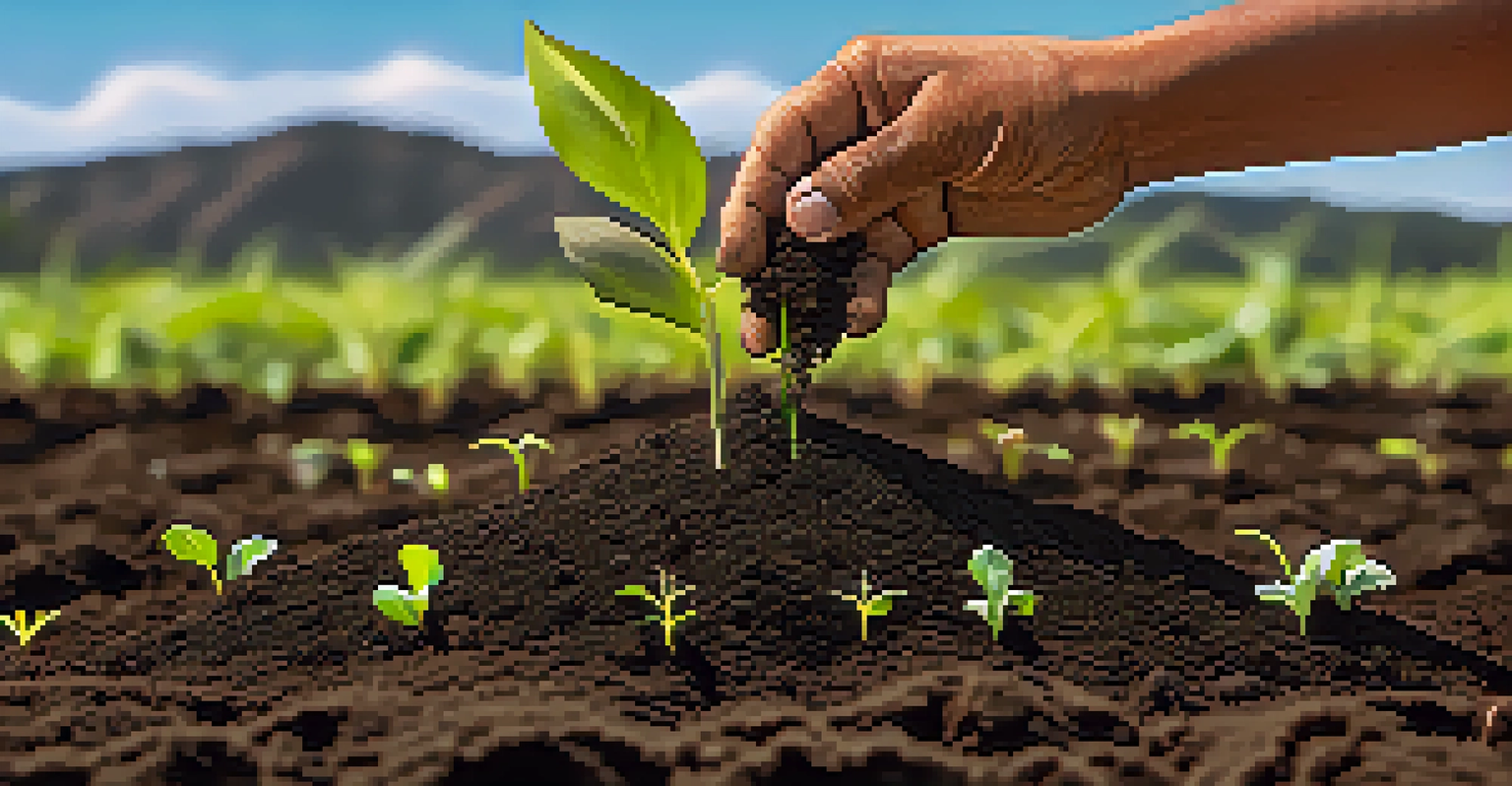Impact of Climate Change on Hawaii's Agriculture Industry

Understanding Hawaii's Unique Agricultural Landscape
Hawaii's agriculture is as diverse as its culture, producing everything from tropical fruits to coffee. The islands' unique climate and geography create ideal conditions for a variety of crops, which are often grown in small, family-owned farms. However, this vibrant agricultural landscape is now facing unprecedented challenges due to climate change. Farmers are beginning to experience shifts in weather patterns that threaten their livelihoods and the state's food security.
The greatest threat to our planet is the belief that someone else will save it.
For instance, rising temperatures can lead to heat stress in crops, reducing yields and affecting quality. Moreover, unpredictable rainfall patterns can cause both droughts and floods, making it difficult for farmers to plan their planting and harvesting schedules. These changes not only impact what crops can be successfully cultivated but also pose risks to the overall ecosystem that supports agriculture in Hawaii.
As a result, understanding Hawaii's agriculture means recognizing the delicate balance that exists within its unique environment. It's essential to grasp how climate change disrupts this balance, posing a significant threat to the very fabric of local farming traditions. This sets the stage for a deeper exploration into the specific impacts of climate change on the industry.
Rising Temperatures and Their Agricultural Consequences
One of the most direct effects of climate change in Hawaii is the increase in average temperatures. Over the past few decades, the islands have experienced a warmer climate, which can have serious implications for crop health. Many staple crops, such as taro and coffee, are sensitive to temperature fluctuations, which can lead to reduced yields and quality. For farmers, this means adapting to conditions that may not support traditional farming practices.

Higher temperatures can also exacerbate the prevalence of pests and diseases that threaten crops. Warmer weather creates an ideal habitat for pests to thrive, leading to an increase in infestations that can decimate harvests. Farmers are then faced with the daunting task of finding effective ways to manage these pests, often turning to chemical treatments that can further strain the environment.
Climate Change Threatens Hawaii's Farms
Hawaii's agriculture faces severe challenges from climate change, impacting crop yields and threatening food security.
Ultimately, the rise in temperatures challenges the very essence of farming in Hawaii, pushing farmers to adapt or risk losing their livelihoods. Understanding this issue is crucial to addressing the broader implications for food production and sustainability in the islands.
Changing Rainfall Patterns and Water Resource Management
Climate change is altering rainfall patterns across Hawaii, leading to both droughts and heavy rainfall events. These fluctuations can be particularly damaging for farmers who rely on consistent water supplies for irrigation. During droughts, crops may suffer from water stress, leading to lower yields and even crop failure. Conversely, excessive rainfall can lead to soil erosion and flooding, which can wash away crops and disrupt planting schedules.
Agriculture is our wisest pursuit, because it will in the end contribute most to real wealth, good morals, and happiness.
Farmers are now tasked with managing their water resources more efficiently than ever before. This may involve investing in new irrigation technologies or adopting practices such as rainwater harvesting. However, these solutions often require significant financial investment and may not be feasible for small-scale farmers who are already struggling with the impacts of climate change.
The challenge lies in finding a balance between effective water management and sustainable farming practices. As the climate continues to change, adapting to these new realities will be essential for the survival of Hawaii's agricultural industry.
The Impact of Sea Level Rise on Coastal Agriculture
Hawaii's agriculture is not only threatened by changes in weather patterns but also by rising sea levels due to climate change. Many agricultural lands, especially along the coast, are at risk of inundation, which can lead to soil salinization. Saltwater intrusion into freshwater aquifers can compromise the quality of water available for irrigation, making it difficult for farmers to maintain healthy crops.
In addition to water quality issues, rising sea levels can lead to the loss of valuable agricultural land. Coastal farms that have thrived for generations may find themselves submerged or rendered unusable. This loss not only affects local food production but also the economy, as these farms often contribute significantly to Hawaii's agricultural exports.
Adaptation Strategies for Farmers
Farmers are diversifying crops and adopting sustainable practices to build resilience against climate-related impacts.
Addressing the impacts of sea level rise requires a multifaceted approach, including the conservation of coastal ecosystems and the implementation of protective measures. As farmers grapple with these challenges, it becomes clear that the future of Hawaii's agriculture depends on proactive solutions that take climate change into account.
Adapting to Climate Change: Strategies for Farmers
In the face of climate change, many farmers in Hawaii are actively seeking ways to adapt their practices. This might include diversifying crops to include varieties that are more resilient to changing conditions. By planting a mix of crops, farmers can mitigate the risk of total loss due to extreme weather events or pest infestations, ensuring some level of food production.
Additionally, embracing sustainable farming practices, such as agroforestry and organic farming, can help build resilience in agricultural systems. These methods not only improve soil health but also enhance biodiversity, creating a more robust ecosystem that can withstand climate-related stresses. Many farmers are also turning to technology, such as precision agriculture, to optimize resource use and minimize waste.
These adaptive strategies are crucial for the future viability of Hawaii's agriculture. As farmers continue to innovate and adjust, they can serve as models for resilience in the face of climate change, inspiring others to take action in their communities.
The Role of Research and Innovation in Agriculture
Research and innovation play a critical role in helping Hawaii's agricultural industry cope with the challenges posed by climate change. Universities and research institutions are working to develop climate-resilient crop varieties and sustainable farming practices that can withstand the new climate realities. Collaborations between scientists and farmers can lead to practical solutions that address immediate needs while preparing for the future.
For example, breeding programs aimed at creating heat-resistant or drought-tolerant varieties can help farmers maintain productivity despite changing conditions. Additionally, advancements in agricultural technology, such as remote sensing and data analytics, can provide farmers with insights into weather patterns and soil health, enabling them to make informed decisions.
Community Support is Essential
Engaging communities in supporting local farmers and promoting sustainable practices is crucial for the future of Hawaii's agriculture.
By fostering a culture of innovation and research, Hawaii's agricultural community can better equip itself to face the challenges of climate change. These efforts not only benefit individual farmers but also contribute to the overall resilience of the agricultural sector in the islands.
Community Engagement and Support for Farmers
The impacts of climate change on agriculture are not just a concern for farmers; they affect entire communities in Hawaii. As the agricultural sector faces these challenges, community engagement and support become vital. Initiatives that promote local food systems, such as farmers' markets and community-supported agriculture (CSA) programs, can help strengthen the connection between consumers and local farmers.
Furthermore, community organizations can play a crucial role in providing resources and training for farmers looking to adapt to climate change. Workshops on sustainable practices, water management, and pest control can empower farmers with the knowledge they need to navigate these challenges. By coming together, communities can create a support network that fosters resilience and encourages collaboration.

Ultimately, addressing the impacts of climate change on Hawaii's agriculture requires a collective effort. By supporting local farmers and promoting sustainable practices, communities can help ensure a thriving agricultural industry for future generations.